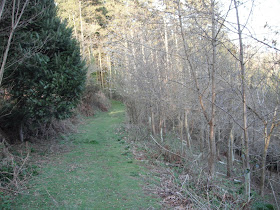Perhaps it's a more practical cost; no rain means the grass or maize won't grow and we'll be short of winter fodder again. All I know is that, for the first time ever, the wild stampede that is spring gardening is already corralled and under control. At least for now.
I'll probably pay for that hubris later, mind.
The early warmth has been less pleasant for the sheep, who are still wearing their winter clothes. I don't usually shear them until May but they looked so uncomfortable, and the ram is coming in the next fortnight. It's not good husbandry to stress the sheep when they're trying to conceive, and as a general rule rolling them about on the shearing board isn't relaxing. For either of us.
I don't loathe shearing, but it's hot, heavy work. To say I'm an inexperienced shearer is an understatement. Steve, the farmer who came to shear with me today, has sheared a thousand sheep in his time, and he claims to be an amateur. I couldn't do it without guidance yet.


Learning is made more difficult by my choice of sheep. Polled Dorsets are notorious fidgets. Five minutes on its back and the sheep is thrashing wildly. If you've ever been kicked by a sheep you'll know they're stronger than they look, with the precision aim of a crotch-seeking missile. A skilled shearer can get the wool off in five minutes; a trainee is still figuring out the complicated positions - a foot here, a knee there - vital to holding on to your sheep long enough to get the clippers over it. I didn't loose a sheep this time, though at one point I was pinned under one, laying flat to avoid kicking back legs, and holding one of its ears in each hand, in a desperate bid to prevent its escape.
That may explain why I have sheep shit on the back of my head.
It was bone-tiring, but it was a good learning process. I learned that ewe lambs are less patient than older sheep. I learned that it saves your back if you pen them close to where you plan to shear them, rather than catching and dragging each sheep from the far end of the barn, where it's trying to hide from you. I learned wearing sneakers gives you better grip and contact than hiking boots. I learned that if you pen the sheep overnight away from grass, they get rid of all their poo before you shear them, and less ends up in your hair.

I managed to shear Eunice by myself
I've also learned that the local agricultural college runs a three-day sheep shearing course, so I've put my name on the list. And I'm going to practice on a few of Steve and Peggy's sheep, a quiet and less woolly variety.
The fleeces, ready to be cleaned and spun.
I loaded all the lambs in the sheep trailer, and moved them to the paddock across the road. It's the same paddock where they were born, only six months ago. They have each other for company and don't seem distressed by the weaning process. I can see them from my bedroom window, which makes checking on them a breeze. I can also hear them through the bedroom window calling for their dinner.




















